 Our Colonial Williamsburg chefs love incorporating fresh herbs into their dishes—most of which they grow outside in our historic gardens. But there’s a new labor of love growing down inside the kitchen at the Williamsburg Inn. The unique, fresh idea? Hydroponic herbs!
Our Colonial Williamsburg chefs love incorporating fresh herbs into their dishes—most of which they grow outside in our historic gardens. But there’s a new labor of love growing down inside the kitchen at the Williamsburg Inn. The unique, fresh idea? Hydroponic herbs!
 Plants in hydroponic gardens grow thanks to nutrient-rich solutions in the water, underneath this bed of “rocks.” Because there’s no soil involved, Executive Chef Travis Brust has been given the green light by the Health Department to start experimenting. He actually got the idea at home where he’s successfully grown hydroponic vegetables. Still in its early stages, Chef tells me growing herbs this way has definitely been a learning process.
Plants in hydroponic gardens grow thanks to nutrient-rich solutions in the water, underneath this bed of “rocks.” Because there’s no soil involved, Executive Chef Travis Brust has been given the green light by the Health Department to start experimenting. He actually got the idea at home where he’s successfully grown hydroponic vegetables. Still in its early stages, Chef tells me growing herbs this way has definitely been a learning process.
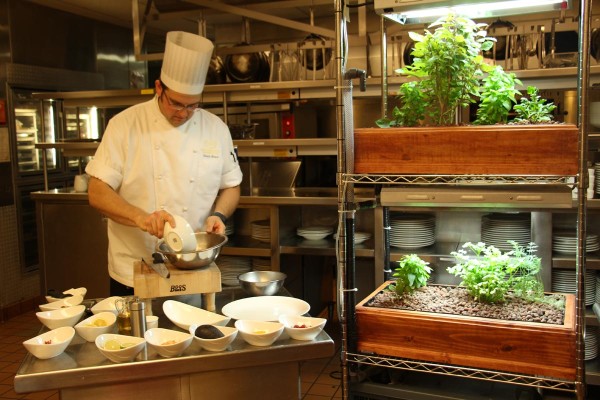 What’s the benefit to this way of gardening? From the lighting, to the water—even the (lack of) bugs—this is a controlled environment. It’s also uber convenient. Think about it. As a chef is cooking or even plating a meal, he or she can just snip off fresh herbs right there beside their station to use as an ingredient or a garnish. Right now, they have basil, cilantro, and dill at their fingertips!
What’s the benefit to this way of gardening? From the lighting, to the water—even the (lack of) bugs—this is a controlled environment. It’s also uber convenient. Think about it. As a chef is cooking or even plating a meal, he or she can just snip off fresh herbs right there beside their station to use as an ingredient or a garnish. Right now, they have basil, cilantro, and dill at their fingertips!
 Chef Travis built both of these boxes by hand, and even stained them himself. He installed ports in the bottom to create an ebb and flow system that runs about every three hours. That’s when the table floods with that nutrient-rich water that soaks into the roots of the herbs for about an hour and a half before flowing back out. Even when the water isn’t flowing, it’s being aerated in a massive tub thanks to filters that also make sure the nutrients are constantly being mixed up.
Chef Travis built both of these boxes by hand, and even stained them himself. He installed ports in the bottom to create an ebb and flow system that runs about every three hours. That’s when the table floods with that nutrient-rich water that soaks into the roots of the herbs for about an hour and a half before flowing back out. Even when the water isn’t flowing, it’s being aerated in a massive tub thanks to filters that also make sure the nutrients are constantly being mixed up.
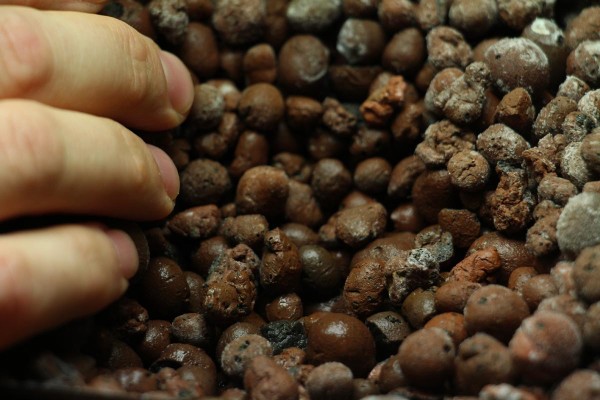 As for rocks—they aren’t actually rocks at all. They’re Hydroton and made from expanded clay. Each pebble has tiny pores that together act as a micro sponge to soak up the minerals and water. Chef tells us he has to adjust the levels of nutrients, depending on what he’s growing. Each herb requires a different formula and figuring out that formula takes time. For example, when he upped the nutrient level to help the basil, it stopped the production of the edible pansies. You can see in the two pictures below how vibrant the basil is compared to pansies with the dying leaves. Since the plants are right beside each other, they’re pulling from the same water supply.
As for rocks—they aren’t actually rocks at all. They’re Hydroton and made from expanded clay. Each pebble has tiny pores that together act as a micro sponge to soak up the minerals and water. Chef tells us he has to adjust the levels of nutrients, depending on what he’s growing. Each herb requires a different formula and figuring out that formula takes time. For example, when he upped the nutrient level to help the basil, it stopped the production of the edible pansies. You can see in the two pictures below how vibrant the basil is compared to pansies with the dying leaves. Since the plants are right beside each other, they’re pulling from the same water supply.
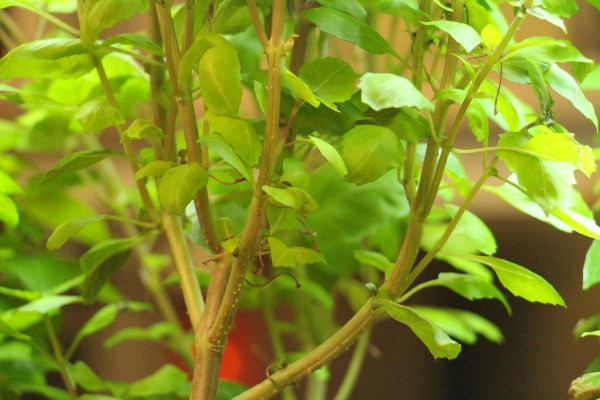
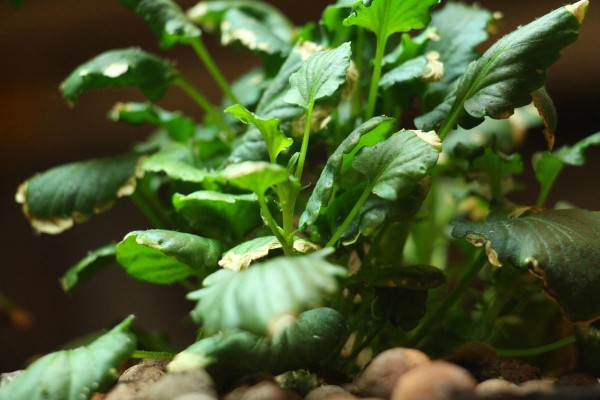 On the other hand, the cilantro has also been doing extremely well! It’s only been in for a couple of weeks and appears to be thriving under the lighting conditions which mimic summer. Right now, the lights stay on 14 hours a day. Chef Travis says they can adjust the lighting depending on the season and what they’re trying to grow.
On the other hand, the cilantro has also been doing extremely well! It’s only been in for a couple of weeks and appears to be thriving under the lighting conditions which mimic summer. Right now, the lights stay on 14 hours a day. Chef Travis says they can adjust the lighting depending on the season and what they’re trying to grow.
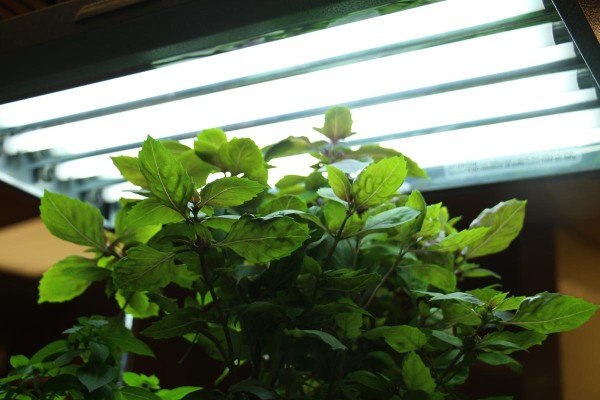
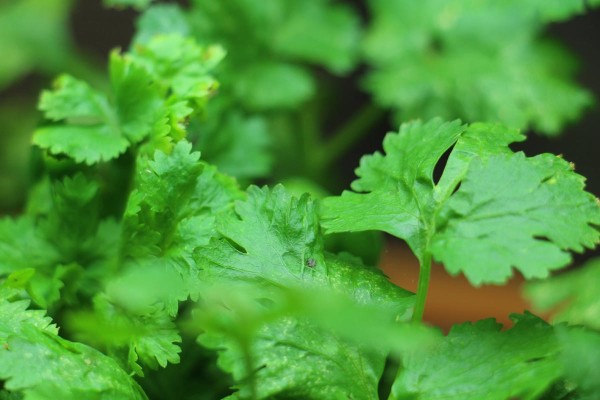 Another bonus to this garden is the efficient use of water. These two beds run off 15 gallons of water for the entire month. That much land would take almost 100 to 110 gallons of water (between rain and watering) to keep the plants thriving. Chef Travis’ hope is to expand this project and eventually have two or three systems with nutrient levels that work for each herb.
Another bonus to this garden is the efficient use of water. These two beds run off 15 gallons of water for the entire month. That much land would take almost 100 to 110 gallons of water (between rain and watering) to keep the plants thriving. Chef Travis’ hope is to expand this project and eventually have two or three systems with nutrient levels that work for each herb.
So, how do these herbs taste? Delicious! You know we couldn’t leave the kitchen without sampling for ourselves. Chef Travis whipped up an Heirloom Tomato and Ricotta Salad with Fresh Basil and Sopresatta Salami. And there was my personal favorite—Cilantro Poached Shrimp with Summer Fruits, Fennel Tops, Avocado, and Sunflower Shoots. I was sure to take pictures before we devoured each plate!
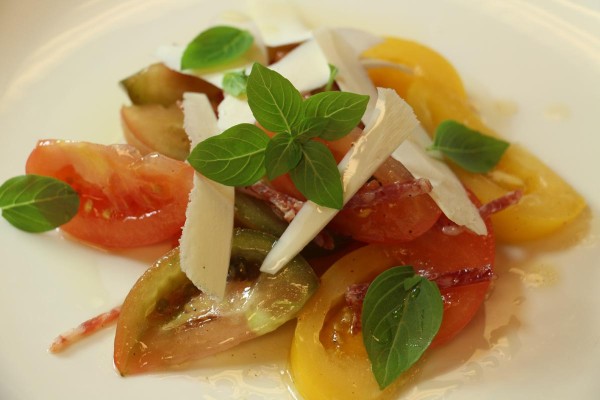
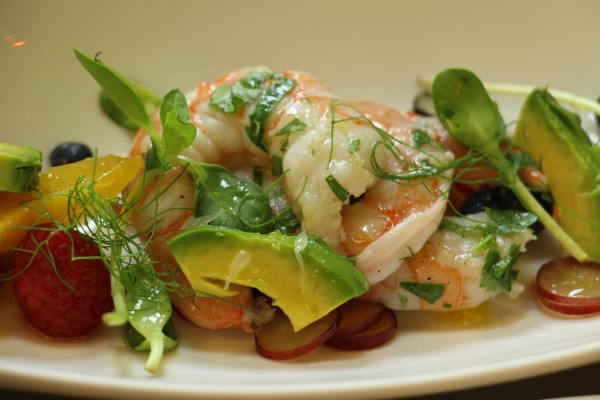
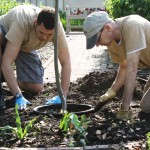


I learned so much from this post - being a chef almost means being a scientist/chemist/and teaching all of us about plants and our food sources. The 2 dishes look so beautiful - too lovely to eat; but so delicious and healthy!! Great posts - my compliments to the chef!!
Gail - I will email Chef Travis!
What a great idea! Where can I get the recipes for the tomato salad & the shrimp?